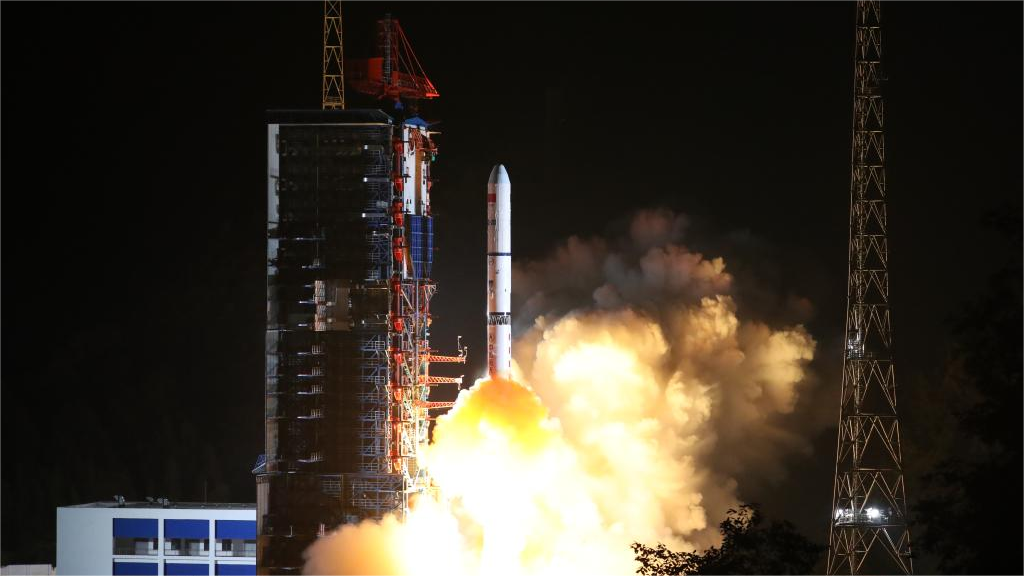'Forced labor' fallacy a bid to contain China's rise

JIN DING/CHINA DAILY
The alleged claim of some Western powers and overseas anti-China forces that China uses "forced labor" in the Xinjiang Uygur autonomous region is a blatant attempt to smear China and hinder its economic progress. That the alleged claim is nothing but a false notion being spread by anti-China forces becomes clear after analyzing more than 30,000 Xinjiang-related reports issued by 22 media outlets based in 15 countries and regions, the Office of the UN High Commissioner for Human Rights' assessment report on the so-called human rights situation in Xinjiang, and the "report on Xinjiang" issued by the Australian Strategic Policy Institute.
In August 2022, the Office of the UN High Commissioner for Human Rights, based on fake information provided by the West, issued a "report" attacking the Chinese government's Xinjiang policy by trying to tarnish the relocation of surplus rural labor and employment of graduates from vocational education and training centers in Xinjiang. In fact, overseas anti-China forces have been criticizing the relocation of surplus labor in Xinjiang for a long time, but earlier they used a different language and narrative to do so.
The relocation of surplus rural labor has been a key policy of the central government since the 1990s to help increase people's incomes in rural areas. Xinjiang answered the central government's call to create more channels for villagers and herdsmen to find better-paying jobs, such as sending surplus labor to the coastal region, in order to increase the incomes of people in rural areas. It is such measures that the Western detractors describe as "forced labor" which they claim is "destroying the Uygur culture".
China has lawfully established education and training centers in Xinjiang, with the express aim of eradicating the breeding grounds of terrorism and religious extremism. But the anti-China forces called these centers "concentration camps".
Needless to say, the Chinese authorities strongly refuted those claims. Yet Western human rights organizations and media outlets called for Western countries to investigate local enterprises' supply chains and stop buying products made by "forced labor" from Xinjiang.
Although China issued a white paper, "Employment and Labor Rights in Xinjiang", in 2020, the US government passed the "Uyghur Forced Labor Prevention Act" in 2021 to impose more sanctions on Chinese companies. And the Western powers turned the alleged "forced labor" fallacy into a legal basis to use unlawful means, including blacklisting several Chinese companies and institutions, to isolate China from the international community and contain its rise.
Since the founding of the People's Republic of China in 1949, the Chinese government has regarded the rights to subsistence and development as fundamental human rights, and fully protected the political, economic, social and cultural rights of the people of all ethnic groups.
However, the anti-China forces are ignoring the fact that there are differences between the concepts of human rights followed by China and the West and they are negating China's achievements in the protection and promotion of human rights, while politicizing and weaponizing their idea about human rights to spread the "forced labor" claim.
First, the Western forces claim the employment and relocation of surplus labor in Xinjiang is nothing but "ethnic assimilation". They have even fabricated lies, claiming China has committed "genocide and crimes against humanity" in the region.
The fact that the Uygur population increased from 3.6 million in 1953 to 11.62 million in 2020 is a slap in the face of the China detractors. The Uygur population grew by more than 3.2 times from 1953 to 2020 while the national population grew by 2.4 times — from 582.60 million to 1.40 billion — during the same time. Evidently, the growth rate of the Uygur population has been higher than the national average.
Second, the Western powers allegedly claim that "Uygur workers are forced to work in inland factories, and those minority ethnic citizens who refuse (to do so) can be punished with internment", without realizing that the relocation of surplus rural labor is part of China's poverty alleviation work.
Third, the anti-China forces allegedly claim the "monitoring" of Uygur workers to improve their command over standard spoken and written Chinese and improve their patriotic education, and the counseling facilities at the workplace are used to "keep watch" on their minds.
According to a white paper titled "Xinjiang Population Dynamics and Data", the Uygur population is on average younger than other ethnic groups, and 8,944 out of every 100,000 Uygur had received a university education. Yet their inability to speak and write standard Chinese negatively affects some of the Uygur workers' employment and income prospects. That's why many enterprises offer free language training classes to their employees, and governments at different levels assign bilingual officials to coordinate the relationship between enterprises and Uygur employees.
As for counseling, it is part and parcel of many Chinese and foreign enterprises' practice to help relieve psychological pressure on their employees.
Fourth, the "forced labor" smear campaign distorts service work by claiming the Uygur workers "are often transported across China in special segregated trains" and "they earn less than their Han ethnic counterparts and are supervised by digital facilities". The fact is, China protects the legitimate rights and interests of workers of all ethnic groups. Chinese laws, policies and practices advocate equal pay for equal work without discrimination against any ethnic group. Uygur workers, as Chinese citizens, enjoy the same rights, and enterprises have no right to and nor should they restrict their freedom.
And fifth, overseas anti-China media outlets have mainly cited "research reports" by the Australian Strategic Policy Institute and anti-China scholar Laura Murphy, and the statements of the separatist organization "World Uyghur Congress" along with its affiliated bodies to prove their claim. But a large number of such media reports have the tendency to cite anti-China politicians to support their narratives instead of using first-hand information. As such, Western media outlets quote the lies of the anti-China forces and use appalling news headlines to mislead readers and spread lies.
The anti-China forces concocted the alleged "forced labor" claim to contain China's economic development by prompting foreign governments to impose sanctions on Chinese enterprises and other entities. But their smear campaign cannot obliterate the truth or hinder China's development.
The author is an associate professor of the Journalism and Communication College at Xinjiang University. The views don't necessarily reflect those of China Daily.
Photos
Related Stories
- GT Voice: Western smears can’t conceal economic benefits from BRI
- GT Voice: Why is the West keen to politicize China-Russia energy cooperation?
- Visiting program for young sinologists opens in China's Xinjiang
- 30,000 plus Xinjiang-related stories expose how certain Western media fabricate, hype up ‘forced labor’ smear
- China's Xinjiang posts robust foreign trade growth in first three quarters
Copyright © 2023 People's Daily Online. All Rights Reserved.









